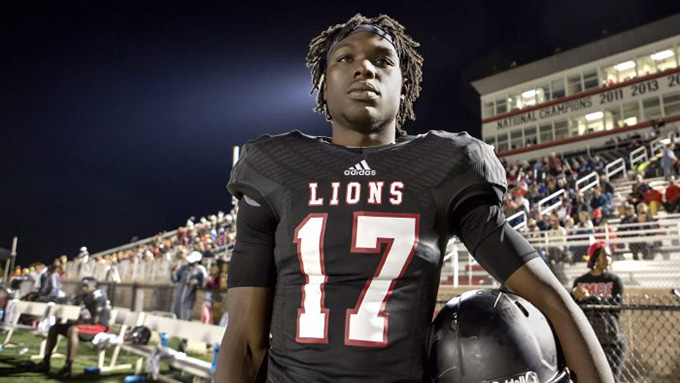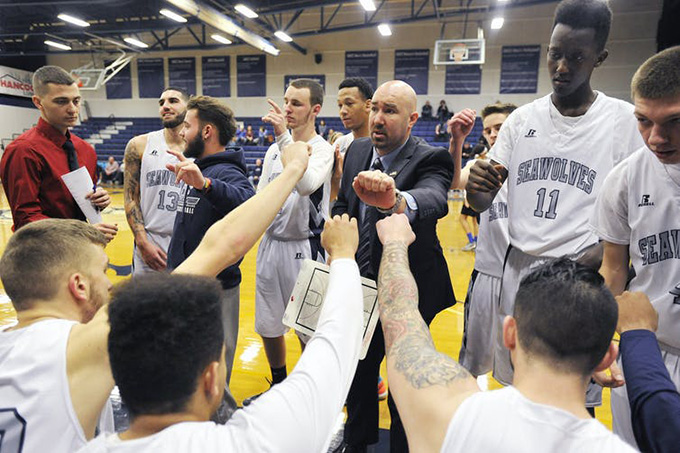
The concept behind Netflix’s hit docuseries “Last Chance U” is simple: Locate a junior college sports team, follow the team around for an entire season with video cameras, and show how team members struggle to realize their dreams of going pro despite their difficult pasts.
The show’s popularity rests on the fact that athletes often end up in junior college – or “JUCO,” as it’s often called – through adverse circumstances. These colleges often represent their last chance to get recruited to a big-time college team, or at least a four-year college. The prospect of going from “rags to riches” as an athlete is a narrative that seems to resonate well.
While “Last Chance U” has dealt with junior college football, on March 10 an eight-episode spinoff will focus on junior college basketball.
For me, “Last Chance U” is more than just a TV show. It’s emblematic of a championship-winning junior college basketball team in the Midwest that I have been following since 2019 as a researcher focusing on athletes who come from adverse circumstances.
‘Out of options’
Much of my work for this study took place during the winter of 2020, when I spent two weeks with the team and shadowed the head coach – Coach Steve – from morning to night.
Coach Steve – who has been the head coach since 2004 – told me during our first conversation since “Last Chance U” came on TV that people have been “1,000 times more curious” about his job.
“I get all these people asking me, ‘Is your job really that hard?‘ or, ‘Do your players really come from situations like this?’” Coach Steve explained.
He said part of what makes junior college sports so intriguing – and different from big-time college sports – is that “no one wants to come to JUCO; they come because they are out of options.”
“I get these players who are not academically eligible, or they have done something that has scared away NCAA recruiters,” Coach Steve said, using the well-known acronym for the National Collegiate Athletic Association, the organization that governs sports at four-year colleges. One player, for instance, had a gun possession charge that made recruiters turn away. Several other players simply didn’t have a good enough academic standing to play.
“They are extremely talented, but also very vulnerable,” he says of the players, “and now I have to deal with the baggage.”
What Coach Steve describes is similar to the experiences of dozens of other athletes who have told me about the circumstances they struggled to overcome.
Preparing for college
The goal, then, is for Coach Steve and his support team to spend a year or two improving the player’s athletic and academic standing so he can earn the NCAA scholarship that he missed out on after high school. Sports teams at junior colleges, or community colleges, are governed by the National Junior College Athletic Association.
The name of Coach Steve’s school is being withheld to protect the privacy of his players.
“My players are almost all local kids, meaning they come from some really tough neighborhoods with minimal prospects,” Coach Steve told me. “So I feel great pressure to make sure they get scholarship offers, since most of them will not play professional basketball.”
Junior colleges are not required to report the percentage of students who transition to four-year NCAA schools, according to Wanda Bodey, director of compliance and eligibility at the NJCAA.
However, Bodey told The Conversation that the NJCAA is trying to build a database to capture the data.
Coach Steve told me that about 90% of his players get offers to four-year colleges.
I have no reason to doubt Coach Steve’s figures, which may even be conservative. When I followed the team in 2020, every player got a scholarship offer to an NCAA Division I or Division II school or a college where sports is governed by the National Association of Intercollegiate Athletics.
Streets are calling
Coach Steve has no shortage of stories about the challenges that his players face.
“Halfway through this season my best player disappeared for a week, went radio silent,” he told me in 2020. “Then he comes back and tells me one of his friends was murdered in a drive-by shooting and his gang was pressuring him to help retaliate against the rival gang. So, against my better judgment, I bring him back, then he disappears again, then comes back. What am I supposed to do? If I cut this kid his life is over; if I keep him, the team is jeopardized.”
In this case, the player had some outside mentors who set up meetings with the coach to bring him back.
“People might think this kind of thing is a rarity,” Coach Steve explained. “But the problem is, I deal with something like this almost every season, and it just comes with the territory.”
More than championships
While Coach Steve says championships are desirable, his view of success transcends wins and losses on the court.
“Winning is important, especially since I need to do so to keep my job, but what I really value is moving my players on from here to the NCAA so they get a college education and are prepared for life after basketball.”
To accomplish this goal, Coach Steve relies upon the efforts of employees who go far beyond their job description.
The academic counselor, for instance, was crucial in supporting the emotional needs of the players. The counselor had a role similar to that of the beloved Brittany Wagner, academic adviser from the first and second seasons of “Last Chance U,” who is now a motivational speaker. The counselor understood the players’ needs, since she grew up in the community and even got a degree from the same junior college where she now works.
“My job is exhausting, but I love it, and I know how to keep our players on the right track,” the counselor told me. “It sounds crazy, but I treat them the same as I treat my toddler: tire them out and keep them busy during the day so they go home and go to sleep, instead of go home and make bad decisions.”

Southern Maine Community College basketball coach Matt Richards talks with his team in 2017. Shawn Patrick Ouellette/Portland Portland Press Herald via Getty Images
All-volunteer force
Coach Steve has no money to pay for assistant coaches, so he has to rely upon highly qualified volunteer coaches who use the job as a resume builder. The number of assistant coaches fluctuates. He had two at the time of my study but has had as many as five in the past.
One of this year’s assistants said: “I lost my coaching job at (a Division I school) because that is just the nature of this business. With nothing available I took the assistant coaching job here to build up my resume and hopefully use it as a steppingstone. I am sacrificing a lot to be here. I am 35 years old, living with my parents, I have no money, no girlfriend, and no salary from the school.”
I wondered why Steve – with all the challenges at the junior college level and a resume that includes a national championship and a proven record of success – has not moved on to coach an NCAA program.
He said the answer is simple. “I do feel that this is my calling, and that is why I don’t even really care about moving on. But a lot of people ask, ‘When are you going to coach at a higher level?’ I would do that if there was a no-brainer opportunity, but that doesn’t flood my mind with doubt and wonder. If my career ends here, I’m good, and to be honest, I could do this forever.”
Author Bio: Rob Book is a Ph.D. Candidate, Lecturer in Cultural Sport Psychology at the University of Southern Denmark
